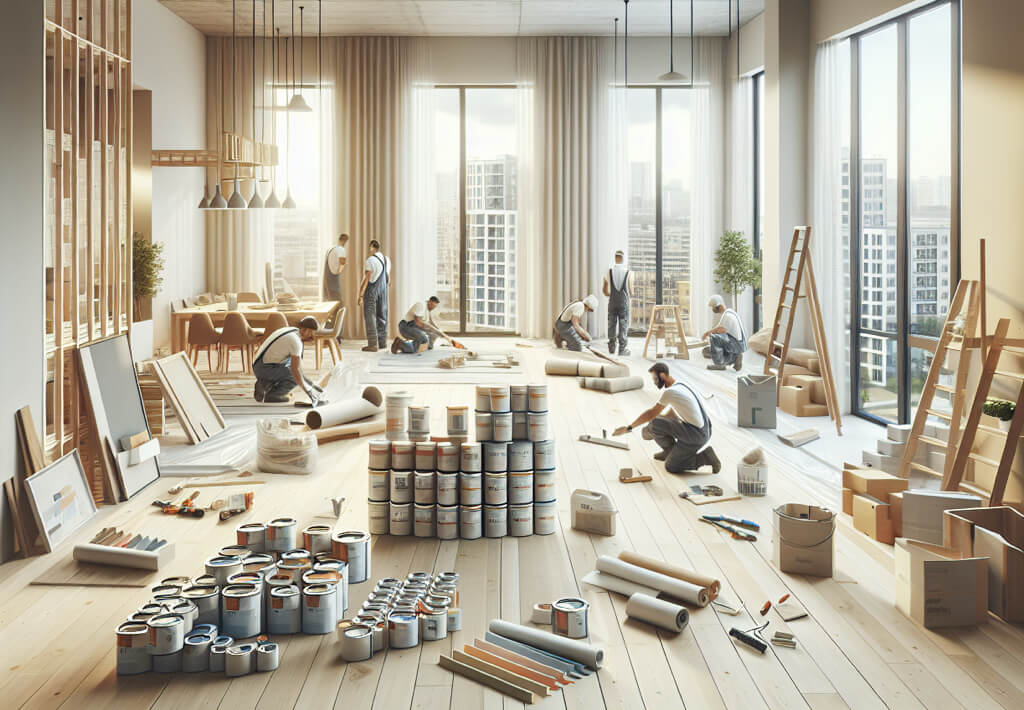
[Image generated with Dall-E]
In last week’s blog, we explored why you should renovate rental properties. The goal of renovation is to attract the right tenants, maximize rent, and minimize vacancy while minimizing renovation costs.
This week, we focus on standardization.
Let me explain what I mean by renovation standardization, using my Austin house renovation as an example.
Our Austin House Renovation
My wife and I are currently renovating the bathrooms in our Austin home. Having renovated hundreds of our clients’ properties in Las Vegas, we thought selecting materials and finding reliable vendors would be simple.
We were (very) wrong.
Without a trusted contractor in Austin, we spent hours interviewing potential candidates and comparing quotes with uncertain outcomes. Additionally, our standard components for rental properties did not appeal to us for our home. So, we embarked on multiple shopping trips to specialty bath stores, flooring stores, and others to find the needed components. We also had to change our selections multiple times due to prices, availability, style conflicts, or something that looked great online but was unappealing in person. This was a significant time and energy expenditure.
Before 2017, we struggled with lengthy renovation times due to extended planning cycles, vendor scheduling delays, inconsistent costs, material shortages, and varying work quality. We standardized all major renovation components and primary vendors in 2017 to solve these issues.
Why Standardize?
“If you can’t measure it, you can’t fix it.”
Without standardization, every project is a unique undertaking that depends on individual expertise. Once you implement standards, you can systematically improve processes, increase efficiency, and reduce complications and costs. Here are the key benefits of standardization.
- Higher quality and lower prices: We partnered with a select group of trusted service providers known for delivering high-quality, cost-effective work on schedule. We secured lower rates and priority scheduling by committing to a substantial volume—4 to 8 renovations per month. These vendors also understand that maintaining our business relationship requires handling all our renovations, regardless of size.
- Lower material costs: Standardizing all significant components, including colors and styles on flooring, countertops, paint, fixtures, etc., enables vendors to buy in bulk and reduce material costs.
- Timeless Design: Instead of chasing fleeting trends, we opted for timeless components that are always acceptable. For example, while blue-gray walls were briefly popular, we stuck with a neutral light tan color that has been our standard for years. This ensures that our properties remain attractive over time without requiring frequent updates.
Direct Benefits to Our Clients
Lower Renovation Cost for Each Client
- Reduced material costs: Before standardization, our vendors bought (for example) flooring through retail channels on a job-by-job basis. Once they knew we would use the same flooring on all properties, they purchased it directly from the manufacturer in bulk. This significantly reduced flooring material costs and lowered overall renovation costs.
- Shorter Renovation Time: Using the same components across job sites makes installation more efficient since workers become familiar with the process. This consistency significantly reduces installation times and overall renovation costs.
Reduced Delays Due to Material Lead Times
- Previously, long lead times for various renovation components often caused project delays. Now, with standardization, our primary vendors maintain most components in stock, virtually eliminating delays due to material availability.
Faster Property Evaluations
- Renovation cost estimates are crucial when evaluating potential properties. Before standardization, relying on spreadsheets and manual calculations often slowed our estimation process. After implementing standardized components, we developed fixed unit costs and software to generate renovation estimates quickly. For example, interior painting costs $1.85 per square foot, including materials and labor. So, painting a 1,500 sq ft property costs $2,775 ($1.85 × 1,500). By accurately estimating renovation costs fast, we can capture good opportunities before they are gone and eliminate bad ones quickly.
Reduced Maintenance and Turn Costs
- We standardized on durable materials that appeal to our target demographic and withstand normal tenant wear and tear, reducing maintenance and tenant turn costs. For example, while more expensive than flat paint, eggshell sheen paint is cleanable, touch-up friendly, and more durable, saving costs in the long term.
The Bottom Line
Our standardization of renovation components has significantly increased efficiency and reduced costs. Using identical materials across properties enabled bulk purchasing, which lowered material and labor costs, thus decreasing overall renovation costs. Also, timeless components maintain appeal without requiring frequent updates. Durable materials, like eggshell paint, minimize costs between tenant turnovers. Standardized components also enable rapid cost estimates through our proprietary software. Overall, this approach delivers lasting benefits in design quality, durability, and cost-effectiveness.
Next week, I’ll explore why renovation sometimes involves removing seemingly desirable items. Stay tuned!





